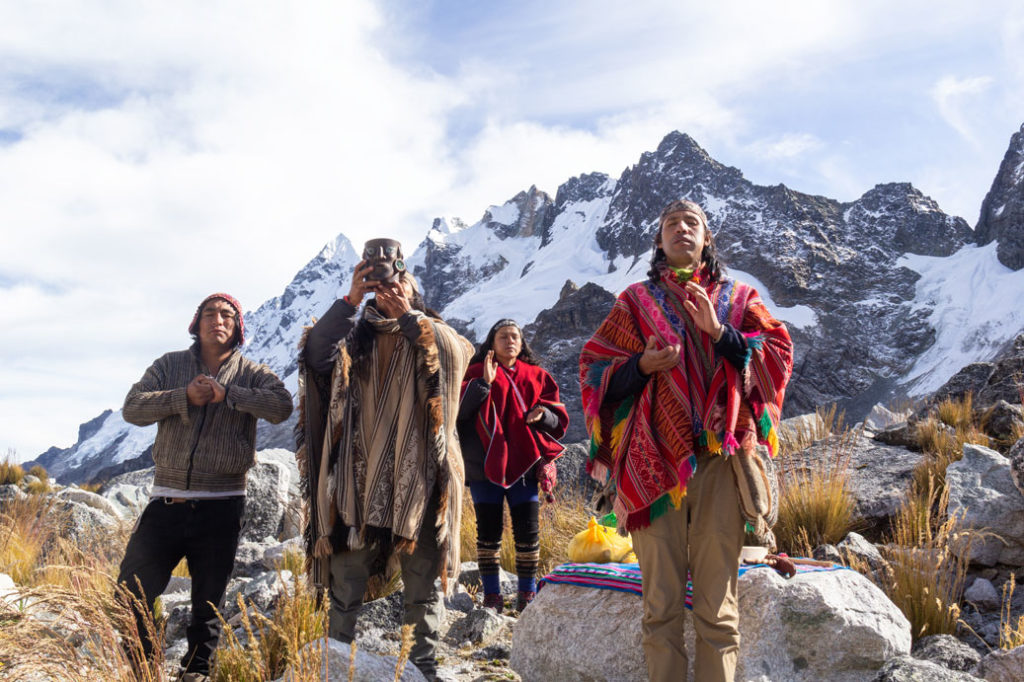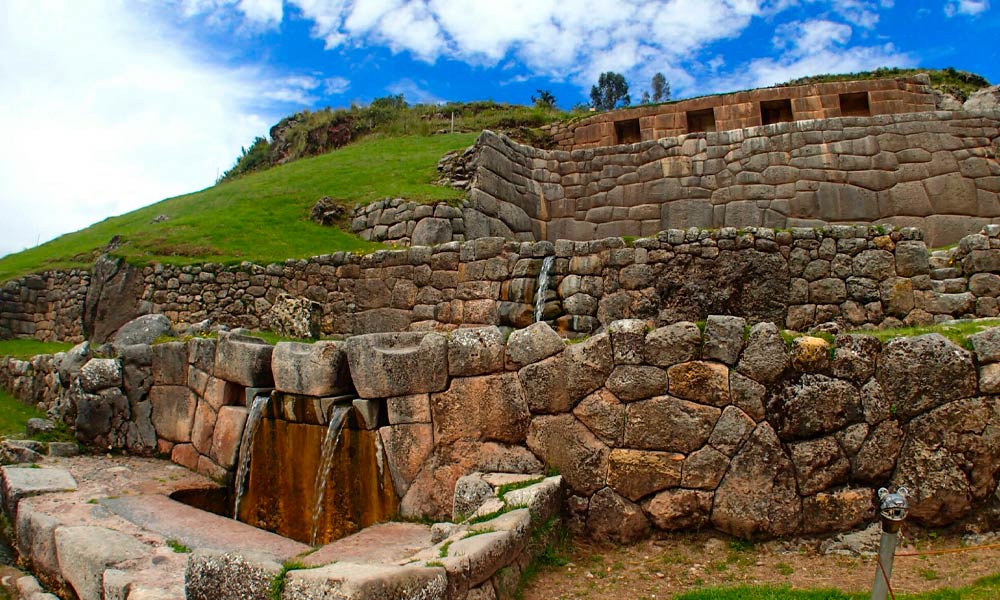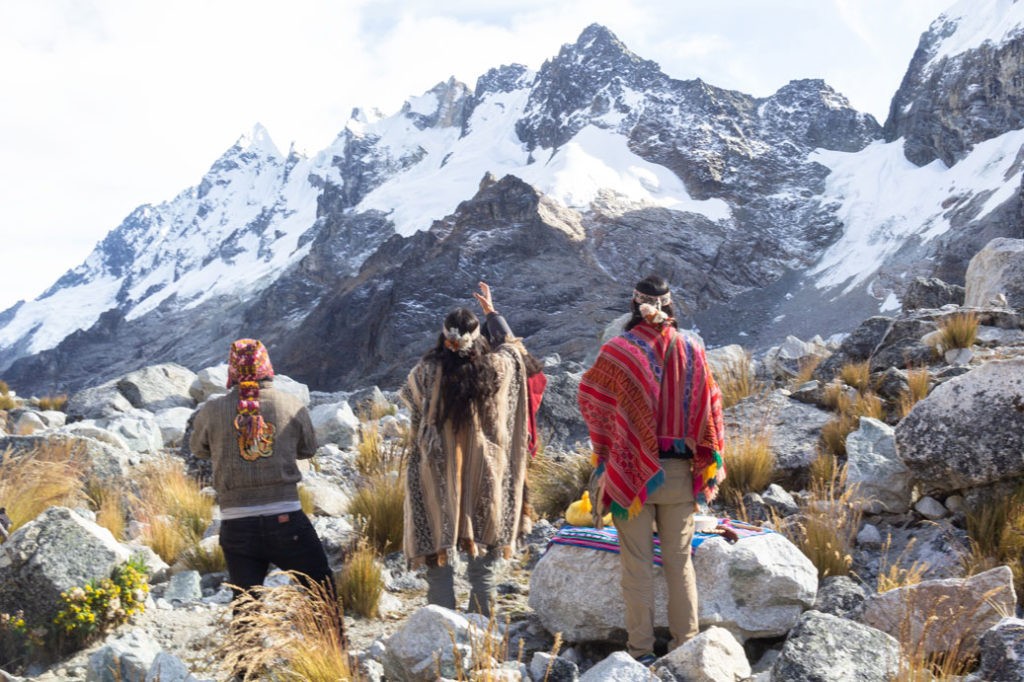Certainly, the ancient medicinal practices of the Inca civilization hold a fascinating legacy that continues to influence modern healers and herbalists. These practices are deeply rooted in a profound understanding of the natural world and the intricate relationships between humans, plants, and the environment. Here’s a more in-depth exploration of the enduring power of Inca natural remedies:
Traditional Herbalism: The Inca people were skilled herbalists who relied on the rich biodiversity of the Andean region to treat various ailments. They had an extensive knowledge of medicinal plants and their properties. Many of these plants continue to be used today in traditional herbal medicine throughout the Andes.
Coca Leaf: One of the most iconic Inca remedies is the coca leaf, known for its stimulant properties. Coca leaves were chewed or brewed into teas to combat altitude sickness, increase energy, and alleviate hunger. They remain an essential part of Andean culture and are still used for their medicinal benefits.
Healing Rituals: Inca healers, often called “curanderos” or “shamans,” performed elaborate healing rituals that incorporated chanting, offerings, and the use of sacred objects. These ceremonies aimed to restore balance and harmony in the body, mind, and spirit.
San Pedro Cactus: The San Pedro cactus, native to the Andes, contains mescaline, a psychoactive compound. Inca shamans used San Pedro in spiritual ceremonies to induce altered states of consciousness, facilitate divination, and promote healing.
Ayahuasca: While Ayahuasca is more closely associated with Amazonian indigenous cultures, the Inca civilization also had their version of this visionary plant medicine. Ayahuasca ceremonies, guided by experienced shamans, were used to gain insights, connect with the spirit world, and promote healing.
Holistic Approach: Inca healing practices were holistic, recognizing the interconnectedness of physical, emotional, and spiritual well-being. Healing wasn’t limited to the individual; it extended to the community and the land itself. Inca healers often performed rituals to maintain harmony with Pachamama (Mother Earth).
Conservation of Knowledge: Despite the disruptions caused by the Spanish conquest and subsequent colonization, the knowledge of Inca healing practices endured. It was often passed down orally through generations, preserved by those who continued to practice and teach these traditions.
Modern Integration: Today, many Andean communities maintain a connection to their ancestral healing practices. Indigenous healers and contemporary herbalists are working to integrate traditional wisdom with modern healthcare approaches. This blending of old and new is gaining recognition for its effectiveness in treating various health issues.
Exploring the ancient medicinal practices of the Inca civilization offers a window into a worldview deeply connected to nature, spirituality, and community. These enduring traditions continue to provide valuable insights into holistic healing and the profound relationship between humans and the natural world.
The Wisdom of Inca Healers: Holistic Approach to Health:
he holistic healing methods employed by Inca healers represent a profound and interconnected approach to addressing the overall well-being of individuals and their communities. These methods seamlessly blend spirituality, herbal remedies, and energy work, creating a comprehensive system that encompasses physical, emotional, and spiritual dimensions of health.
Herbal Remedies: Inca healers possessed an extensive knowledge of the medicinal properties of local plants. They used a wide variety of herbs and botanicals to treat various physical ailments, ranging from digestive issues to infections. These remedies were often prepared through careful processes such as brewing teas, making poultices, or applying plant extracts topically. The choice of herbs was not only based on their physical healing properties but also their spiritual significance.
Energy Work: Central to Inca healing was the concept of “kawsay,” which translates to “energy” or “life force.” Inca healers believed that physical and emotional illnesses could be caused by imbalances or blockages in an individual’s energy. They employed various energy-based techniques to restore balance and harmony. These techniques might include energy clearing, chakra balancing, or working with the energy centers known as “hatun ñawi” (the great eyes). Through these practices, healers aimed to align an individual’s energy with the natural world and the cosmos.
Spiritual Rituals: Inca healers often conducted elaborate spiritual rituals as part of the healing process. These rituals involved offerings to Pachamama (Mother Earth) and other spirits, as well as invocations and prayers. The intention was to seek divine guidance and support in the healing journey. Ceremonial tools and sacred objects played a crucial role in these rituals, further emphasizing the spiritual dimension of healing.
Emotional Well-being: Inca healers recognized the deep connection between emotional and physical health. They provided emotional support and counseling to individuals experiencing mental or emotional distress. Through storytelling, active listening, and empathetic guidance, healers helped patients process and heal emotional wounds.
Community Healing: Healing in Inca tradition extended beyond individual well-being; it encompassed the health of the entire community. Healers often conducted group ceremonies and rituals to maintain harmony within the community and protect against negative energies or external threats. These communal healing practices reinforced the interconnectedness of individuals and their environment.
Symbolism and Cosmology: Inca healing practices were deeply rooted in the symbolism and cosmology of their culture. Healers understood the significance of celestial events, the elements, and natural phenomena. This understanding influenced their diagnosis and treatment methods, aligning them with the larger cosmic order.
Oral Tradition: Much of this ancient wisdom was transmitted orally from one generation of healers to the next. Inca healers were entrusted with preserving and passing down this sacred knowledge, ensuring its continuity.
In essence, Inca healing was a holistic and spiritually infused approach to well-being that recognized the interconnectedness of all aspects of life. It was grounded in a deep reverence for nature, the cosmos, and the inherent healing potential within each individual. Today, as interest in holistic and integrative healing grows, there is a renewed appreciation for the wisdom of Inca healers and their timeless practices.

Herbal Medicine: The Natural Pharmacy of the Andes:
Embark on a captivating journey into the profound herbal wisdom of the Incas, a legacy that continues to thrive and inspire healing and spiritual transformation to this day. At the heart of this ancient tradition are master plants, such as Ayahuasca and San Pedro, which hold a sacred place in the annals of Inca herbal knowledge.
Ayahuasca Ceremony in Cusco: Ayahuasca, often referred to as “the vine of the soul,” is a potent and revered master plant used in sacred ceremonies for centuries. The Ayahuasca ceremony in Cusco is a transformative experience, guided by experienced shamans who understand the plant’s intricate properties and its role in accessing expanded states of consciousness. Ayahuasca, a brew made from the Banisteriopsis caapi vine and the leaves of the chacruna plant, is renowned for its ability to unlock the doors of perception and lead participants on profound inner journeys. During these ceremonies, individuals often encounter visions, insights, and heightened states of awareness. Ayahuasca is recognized not only for its potential to address deep-seated emotional wounds but also for its role in facilitating spiritual growth and a profound reconnection with the sacred.
San Pedro Ceremony Cusco: San Pedro, or Wachuma as it’s known in Quechua, is another master plant that holds a prominent place in Inca herbalism. The San Pedro ceremony in Cusco offers participants a unique opportunity to connect with the plant’s healing energies under the guidance of experienced shamans. San Pedro is a cactus containing mescaline, a psychoactive compound known for its mind-expanding properties. During the ceremony, individuals often experience a sense of heightened clarity, emotional release, and a deep communion with nature and the cosmos. San Pedro is cherished for its ability to facilitate introspection, emotional healing, and a profound sense of interconnectedness with the world.
Healing and Spiritual Ceremonies: The use of Ayahuasca and San Pedro extends beyond individual healing. These master plants are integral to various healing and spiritual ceremonies conducted by local shamans in Cusco. These ceremonies are deeply rooted in ancestral knowledge and are designed to invoke divine guidance, promote harmony with nature, and offer blessings for individuals and communities. The plants are considered allies and sources of wisdom in these rituals, serving as bridges between the physical and spiritual realms.
Respect for Tradition: It’s important to note that these ceremonies are conducted with the utmost respect for tradition and under the guidance of experienced and knowledgeable shamans. The process of preparing and consuming these plants is steeped in ritual and reverence, honoring the wisdom passed down through generations.
The Modern Renaissance: In recent years, there has been a resurgence of interest in the healing and spiritual potential of Ayahuasca and San Pedro beyond the Andean region. People from around the world are drawn to these ancient practices, seeking not only personal healing but also a deeper understanding of the human psyche and the mysteries of existence.
In essence, the herbal wisdom of the Incas, as embodied by master plants like Ayahuasca and San Pedro, continues to illuminate the path of healing, self-discovery, and spiritual awakening for those who are called to explore their transformative potential. These plants serve as profound tools for both individual and collective evolution, carrying forward the sacred legacy of the Inca civilization.

The Spiritual Connection: Shamanic Rituals and Energy Healing:
Appreciate the profound significance of shamanic ceremonies featuring Ayahuasca and San Pedro, where participants embark on a journey of deep spiritual connection, emotional healing, and the acquisition of ancient wisdom. These ceremonies are at the heart of indigenous traditions and continue to offer invaluable insights and transformation.
Ayahuasca Ceremony in Cusco: The Ayahuasca ceremony is a sacred ritual that has its roots in the ancient practices of indigenous Amazonian cultures. At its core, it’s a powerful means of communion with the divine and inner exploration. Under the expert guidance of experienced shamans, participants are guided through a ceremonial process that involves consuming the Ayahuasca brew. This brew, prepared from the Banisteriopsis caapi vine and the leaves of the chacruna plant, contains psychoactive compounds that induce altered states of consciousness. These states often bring forth visions, deep introspection, and intense emotional experiences.
The Ayahuasca ceremony serves as a bridge between the material and spiritual realms, providing a platform for participants to confront and heal deep-seated traumas, gain clarity on life’s purpose, and access ancestral knowledge held within the collective consciousness. It’s a profound experience of self-discovery, inner healing, and spiritual awakening.
San Pedro Ceremony: The San Pedro ceremony, using the San Pedro cactus as its focal point, is another ancient shamanic tradition deeply ingrained in Andean and Amazonian cultures. This cactus contains mescaline, a psychoactive substance known for its ability to induce altered states of consciousness. During the ceremony, participants ingest the San Pedro brew under the guidance of skilled shamans.
The San Pedro ceremony is renowned for its ability to provide clarity, emotional healing, and a deep sense of interconnectedness with nature and the cosmos. Participants often experience heightened sensory perception, introspection, and a profound sense of unity with all living beings. It’s a journey that allows individuals to release emotional burdens, gain insights into their life’s path, and reconnect with the sacred energies that permeate the natural world.
Healing and Wisdom: Both Ayahuasca and San Pedro ceremonies have been utilized for centuries by indigenous communities as tools for emotional and spiritual healing. These ceremonies have the power to unlock repressed traumas, release negative patterns, and offer a unique conduit for gaining ancestral knowledge and wisdom. Shamans, as experienced guides, play a pivotal role in ensuring the safety and efficacy of these experiences, often facilitating interpretations of participants’ visions and emotions.
Respect and Reverence: It’s essential to approach these ceremonies with the utmost respect for the indigenous traditions and the expertise of the shamans who conduct them. They are revered as the carriers of ancient wisdom and the intermediaries between the human and spirit worlds. Participants are encouraged to approach these ceremonies with humility, openness, and a willingness to confront their inner landscapes.
In essence, Ayahuasca and San Pedro ceremonies are profound rites of passage that offer a sacred space for individuals to connect with the divine, embark on transformative healing journeys, and tap into the wellspring of ancestral knowledge that continues to enrich and guide those who seek it. These ceremonies are a testament to the enduring spiritual heritage of indigenous cultures and their profound capacity to facilitate personal growth and collective healing.

Healing Legacy: Contemporary Applications and Continuing Impact:
Journey through time and culture to witness how the ancient Inca medicine, rooted in practices like Ayahuasca and San Pedro, continues to reverberate in modern healing modalities. These time-honored traditions have not merely faded into history but have rather evolved and adapted to meet the needs of contemporary seekers of spiritual insight, emotional healing, and holistic well-being.
Ayahuasca’s Resurgence: Ayahuasca, known as “the vine of the soul,” has experienced a remarkable resurgence in recent years. While its origins are deeply rooted in the Amazon rainforest and indigenous practices, Ayahuasca ceremonies are now conducted in various parts of the world. This global reach underscores the universal appeal of Ayahuasca as a profound tool for personal transformation. Modern healing centers and retreats, especially in places like Cusco and the Amazon basin, have embraced Ayahuasca as a means of facilitating deep emotional healing, spiritual expansion, and personal growth. Participants are drawn to the ceremonies seeking relief from emotional traumas, spiritual insights, and a deeper connection with themselves and the cosmos.
San Pedro’s Continued Influence: Similarly, San Pedro, the revered cactus used by Andean cultures for centuries, remains a significant force in contemporary healing. Its mescaline-rich composition offers an avenue for introspection, emotional healing, and reconnection with nature. The ancient wisdom of San Pedro has found resonance with modern seekers of holistic well-being. Shamans and healers continue to incorporate San Pedro ceremonies into their practices, recognizing its capacity to bring clarity, emotional release, and a profound sense of unity with the natural world. The enduring allure of San Pedro lies in its ability to provide spiritual insights and emotional healing that transcend cultural and temporal boundaries.
Holistic Healing: What sets these ancient Inca medicines apart is their holistic approach to healing. They don’t merely address physical ailments but also attend to emotional and spiritual imbalances. In modern contexts, they are often integrated into holistic wellness practices that encompass mind, body, and spirit. This approach acknowledges the interconnectedness of these aspects of human experience and seeks to heal them in harmony. Ayahuasca and San Pedro ceremonies are seen as catalysts for holistic healing, helping individuals confront deep-seated emotional traumas, anxieties, and existential questions. The result is often a profound sense of inner peace, emotional balance, and a clearer understanding of one’s life path.
Expanding Spiritual Understanding: The resurgence of Ayahuasca and San Pedro ceremonies has not only opened the doors to individual healing but has also contributed to a broader understanding of spirituality. It fosters an appreciation for the unity of all life, the sacredness of the natural world, and the interconnectedness of human beings with the cosmos. These ceremonies serve as a bridge between ancient indigenous wisdom and contemporary spiritual exploration, allowing individuals to tap into universal truths and gain insights into the mysteries of existence.
In essence, the ancient Inca medicines of Ayahuasca and San Pedro continue to play a pivotal role in the modern healing landscape. They are vehicles for personal transformation, conduits for spiritual growth, and bridges to the enduring wisdom of the Inca civilization. As individuals from diverse backgrounds seek their healing and spiritual potential, these sacred medicines persist as powerful allies on the journey of self-discovery and holistic well-being.

Uncover the enduring legacy of Inca’s ancient medicine and its connection with the sacred use of ayahuasca and san pedro. Embrace the timeless healing wisdom that continues to inspire holistic well-being and consciousness expansion in the modern world.









